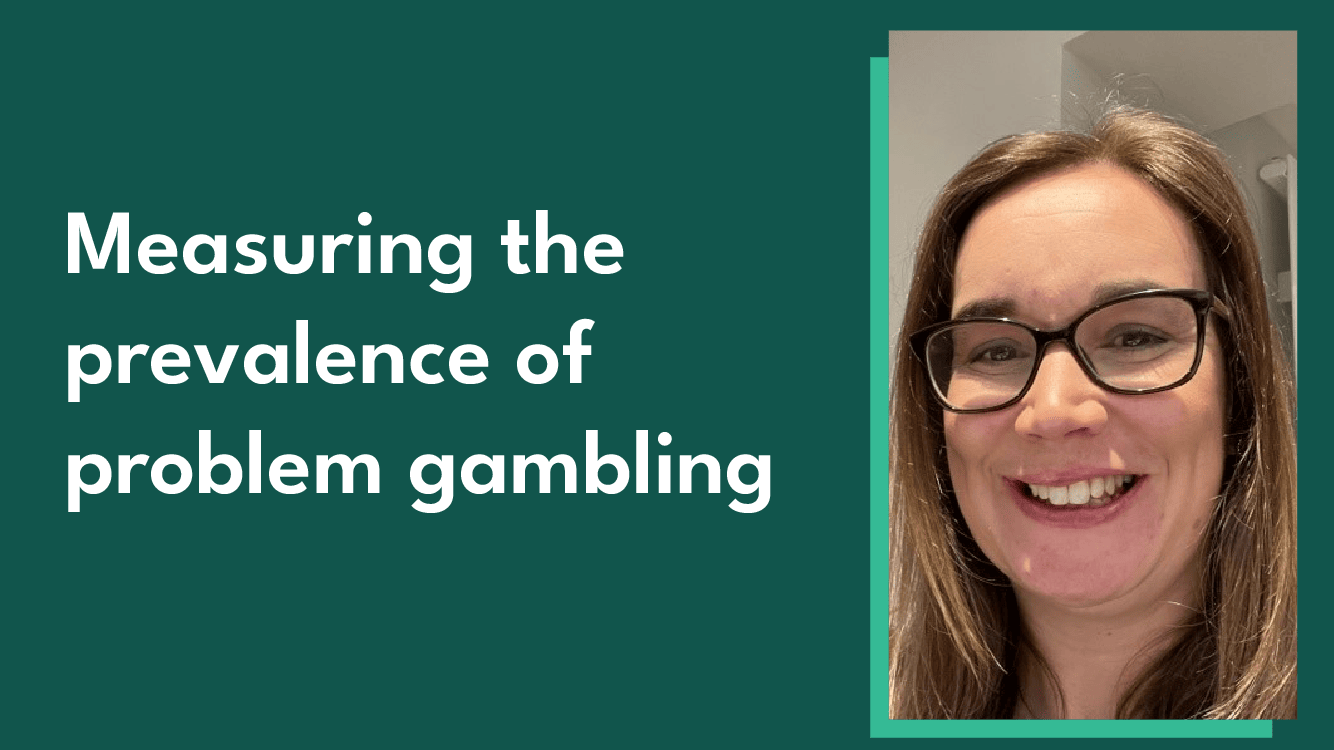
Measuring the prevalence of problem gambling
Whilst millions of people enjoy gambling safely in Great Britain, we know there are also hundreds of thousands of people who face difficulties when it comes to gambling.
Posted 26 May 2023 by Helen Bryce
However the exact number of people categorised as ‘Problem Gamblers’ (PG) is complex and is further complicated by a variety of estimates generated by a number of different bodies.
Just this month, the Commission published our quarterly telephone survey, but it has landed in the same month as the delayed publication of the 2021 Health Survey for England by NHS Digital (opens in new tab) and by the end of the month we are also expecting GambleAware (opens in new tab) to publish their Treatment and Support Survey, which includes PG data. In one month alone that is three different ‘PG’ rates in circulation.
And the reason they are all different? Well, that’s where the complexity comes in.
Not only are there a number of different screens and tools to measure PG rates (PGSI, PGSI short form, DSM-IV, DSM V, SOGS - the list goes on) but the survey methodology, the sample design and the scope of the sample can all have a significant impact on the estimates that are produced. This means that estimates are usually not comparable and often get used in the wrong way.
The frequency at which some data is collected is also different and sometimes unpredictable. In recent years, the Covid-19 pandemic has added another complication, interrupting some data collection and changing the gambling landscape for a period of time.
Recognising how unhelpful it is to have multiple estimates of problem gambling was one of the reasons why we first consulted on changes to the way we collect data on adult gambling participation and the prevalence of problem gambling back in 2020 – with the ambition of providing one recognised version of the truth within the gambling sector.
Of course, in reality there will never be just one version as researchers generate PG rates as part of studies where the primary purpose is not to measure it but to use it to provide context but we want our official statistics to set the benchmark.
This is why, building on a successful pilot, later this year we will be launching the Gambling Survey for Great Britain, currently in development by NatCen Social Research and the University of Glasgow. This is a core part of our data improvement programme which is also looking at operator and other data sources.
We are putting a huge amount of time and effort into developing the Gambling Survey for Great Britain and we are prioritising a high quality sample design, a sound methodology and a frequency relevant for developing and measuring the impact of policy and macro trends.
We’ll be utilising a push to web survey which is more practical than a face to face survey in terms of time to administer and cost, and also provides privacy for respondents to complete the survey. It’s a methodology being increasingly used by many bodies who produce official statistics like us. That said, one lesson from the pilot showed the importance of still offering a paper completion route - I admit I was surprised that around 40% of respondents are currently opting to complete the survey on paper. So we have flexed our approach to provide that option so we don’t miss out on those respondents in our sample.
We are also reviewing and improving the questions asked on the survey so that they reflect gambling activities that are available today, whilst including the flexibility to include new questions over time which can react to consumer and market changes. We’ve also engaged with stakeholders including those with lived experience of harm, academics and industry to make sure their views are considered in the design of the survey.
By making our data available through publication to the UK Data Archive we also hope that others can use our research to inform their work and further develop understanding of the gambling landscape together. This carries on the theme from our Evidence Conference that we held earlier this year: working together will lead to better evidence and better outcomes.
We are really looking forward to launching the survey and having timely data at our fingertips, which can be used alongside our Consumer Voice research and triangulated against other data sources to paint a comprehensive picture of Gambling in Great Britain in 2023 and future years to come. Given that the last GB wide picture of gambling was published in 2016, it is exciting to think we’ll have responses from around 20,000 adults published every year. That will make it one of the largest surveys of its kind in the world.
About the author
Helen Bryce is the Gambling Commission's Head of Statistics
